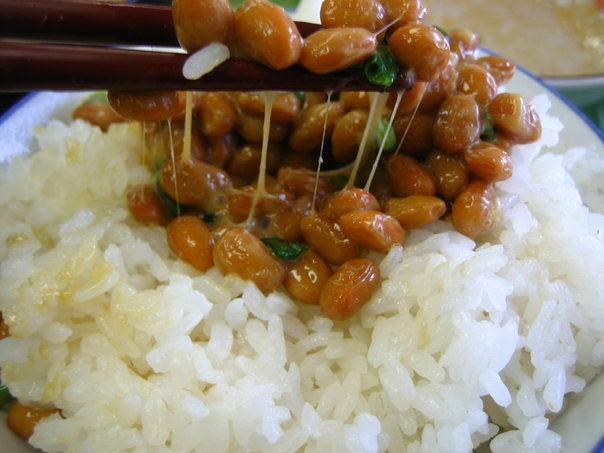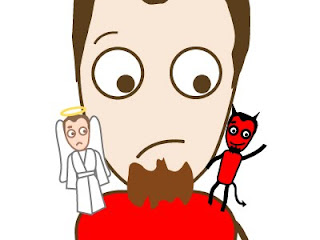
Part I of this series clearly establishes the following, which I hope is non-controversial:
Hunger is not a singular motivation: it is the interaction of several different clinically measurable, provably distinct mental and physical processes.
This is intuitively obvious to everyone: hunger is not a generic drive, satisfiable by shoving a generic substance called “food” into our mouths. The fantasy of “food pills” remains squarely in the Future That Never Was, along with flying cars and nuclear power too cheap to meter.

I miss the future that never was.
While a bewildering variety of “meal replacement drinks” exists, walking down any commercial street in the world reveals restaurants—not kiosks with a row of Slurpee machines filled with flavors of Ensure, Slim-Fast, and Muscle Milk. And even the most dispiriting accretion of fast-food dispensaries around a freeway exit features everything from hamburgers to burritos to chicken salads to tuna sandwiches.
Fortunately, it’s possible to cut through the fog of conflicting motivations by analyzing these four drives in detail: “liking” and “wanting”, which make us eat, and “satiation” and “satiety”, which make us stop eating.
First, let’s define the four drives. I’ll start with the end of the process, for reasons that will become clear.
What Is Satiety? What Does “Sated” Mean?
“Satiety” is our body’s response to the absorption of nutrients through the intestine.
Nutrition Bulletin Volume 34, Issue 2, pages 126–173, June 2009
Satiation, satiety and their effects on eating behaviour
B. BenelamWhen nutrients reach the intestine and are absorbed, a number of hormonal signals that are again integrated in the brain to induce satiety are released.
The important takeaway here is twofold. First, satiety is not a conscious response over which we have any control. Satiety is our body’s direct measurement of actual nutrient intake—a system honed over hundreds of millions of years of evolution. It answers the question “Should I seek out food now—or can I do something else, like seek a mate, play with my children, or take a nap?”
Second, since satiety is based on actual nutrient absorption, which occurs through the small intestine, it takes a long time to receive any satiety cues from the food we eat. As I describe in this article, it takes 2.5-3 hours before half of a mixed meal has even left the stomach, much less been absorbed through the intestine! GI transit times vary dramatically, and are shorter for highly processed, fat-free foods—but it’s clear that satiety takes far too long for it to be a useful signal to stop eating.
Most likely this is why satiation is a separate biochemical process.
What Is Satiation? What Does “Satiated” Mean?
Satiation occurs when the value we place on another bite of food drops below zero. It is our estimate of the marginal utility of eating the next piece of food.
For those not familiar with the economic term, “marginal utility” refers to the value we place on acquiring one more of something. “Marginal” means that we may already have some of it, i.e. we may not be starting from zero. Furthermore, the concept of “diminishing marginal utility” is often useful, because the value we place on something usually decreases as we accumulate more of it. (There are exceptions, which we’ll discuss later.)
This is easy to demonstrate: imagine that we’re at a big outdoor concert, like Coachella. It’s very hot outside, we’re thirsty from standing in the sun and shouting along to bands we like, it would take us a long time to get out to the car and back in, and we don’t want to miss the next band. A cold bottle of water might be worth $5 to us at that point, or even more…so we willingly pay the extortionate $4 from the kiosk. Once we drink it, though, we’re no longer as thirsty as we were, so the value we place on a second bottle might be only $2. However, since the venue still charges $4, we don’t buy a second bottle. In other words, a transaction only occurs if the value we place on something is greater than or equal to the price at which it’s available.
It’s easy to understand satiation by going to an all-you-can-eat buffet: the value we place on each additional plate of food decreases until we decide it’s not even worth getting up from the table to take more—though we could have it for free!
Satiation is not the same thing as being full, or being sated. If all we have in the house is a jar of sweet pickles and a bag of Twizzlers, we might quickly become satiated, since we don’t want to eat any more of either. However, this does not leave us sated: our body knows that pickles and Twizzlers do not contain the nutrients we need to live.
The important distinction here is that satiation is an estimate, based on the sensory experience of eating. Ideally, satiation would accurately predict future satiety—but while satiety is a direct measurement of nutrient intake, and cannot be easily fooled, satiation is dependent on our perceptions.
You Can Fake Satiation, But You Can’t Fake Satiety
Satiation is affected by our senses of taste, smell, texture, and stomach distention; it’s affected by our perception of a food’s caloric and nutritional value; and it’s even affected by mundane considerations like serving size. Not only can satiation be overridden by sufficiently powerful wants, our perceptions of satiation (= future satiety) can easily be influenced or fooled entirely.
Signals about the ingestion of energy feed into specific areas of the brain that are involved in the regulation of energy intake, in response to the sensory and cognitive perceptions of the food or drink consumed, and distension of the stomach. –Ibid.
Many different experiments prove that satiation can be manipulated: here are a couple I found interesting. Let me know if you find others!
J. Nutr. February 2009 vol. 139 no. 2 394-399
Hidden Fat Facilitates Passive Overconsumption
Mirre Viskaal-van Dongen, Cees de Graaf, Els Siebelink, and Frans J. Kok“In the presence of visible fats, energy intake was lower than in the presence of hidden fats, suggesting that hidden fats may contribute to overconsumption.”
The effect was minor but significant: 8-9%. Our perceptions do not perfectly estimate the nutritive content of foods.
Am J Clin Nutr August 2009 vol. 90 no. 2 269-275
Effect of bite size and oral processing time of a semisolid food on satiation
Nicolien Zijlstra, René de Wijk, Monica Mars, Annette Stafleu, and Cees de Graaf“Conclusion: This study shows that greater oral sensory exposure to a product, by eating with small bite sizes rather than with large bite sizes and increasing OPT [oral processing time], significantly decreases food intake.”
The effect was striking: people ate up to 50% more when able to eat freely vs. when limited to small bites every nine seconds! Therefore, satiation is also affected by how fast we eat and how big of a bite we take. The old advice to “eat slowly and mindfully” and “take small bites” does have some scientific support.
The study also contains this hidden gem: “The subjects had to be healthy, be aged 18–30 y, be of normal weight [body mass index (in kg/m2): 18.5–25.0], and like chocolate custard.”
What Is “Liking”? What Are “Likes”?
Psychopharmacology doi:10.1007/s00213-008-1099-6
Affective neuroscience of pleasure: reward in humans and animals
Kent C. Berridge and Morten L. KringelbachLiking: the actual pleasure component or hedonic impact of a reward. Pleasure comprises two levels: (1) core ‘liking’ reactions that need not necessarily be conscious; (2) conscious experiences of pleasure…
In common usage, “liking” is the reward we anticipate from future consumption. However, in scientific usage, “liking” refers to the pleasure we feel from actually eating food—its hedonic impact.
Like “satiation”, “liking” is situationally dependent, and it is only nominally under conscious control. Cultural and social conditioning can affect our likes, particularly as children: for instance, most non-Japanese people find natto disgusting, and most non-Filipinos have a difficult time with balut.
And though we cannot simply choose to “like” something, conscious efforts to affect our preferences will sometimes have an effect over time: for instance, most children find beer disgusting, and it’s well-known that most of us must “develop a taste” for it.
It is important to note that palatability is a major component of “liking”, and “hedonic impact” is the technical term for the pleasure associated with actual consumption. However, we must be careful to distinguish the reward itself from our perception of it. When we say we “like” a food, we may also be taking conscious perceptions and biases into account.
Neurosci Biobehav Rev 20(1) 1-25, 1996.
Food reward: Brain substrates of wanting and liking
KC BerridgeFood reward is not simply a physical property of a taste stimulus itself…Palatability, or the hedonic component of food reward, instead results from a central integrative process that can incorporate aspects not only of the taste, but of the physiological state and the individual’s associative history.
What is “Wanting”? What Are “Wants”?
“Wanting: motivation for reward, which includes both (1) incentive salience ‘wanting’ processes that are not necessarily conscious and (2) conscious desires for incentives or cognitive goals.” –Berridge and Kringelbach
Rephrased: Wants are desires at a specific moment in time. We measure them by how motivated we are to actually go out and get whatever it is we ‘want’. Applied to food, we often use the word “appetite”.
Note that wants are partially, but not entirely, under our conscious control. I might know that cake is bad for me, but that doesn’t stop me from wanting cake. Furthermore, wants vary dramatically over time depending on the degree of satiation and satiety we are experiencing. To use my previous example, if I’ve just eaten a 20-ounce prime rib, I’m unlikely to want any more prime rib…but that doesn’t mean I like prime rib any less.
You’ll note that I’m carefully avoiding the gory biochemical details of these sensory and motivational pathways. This is intentional, and it’s for two reasons: first, we don’t completely understand them, and second, they don’t really matter. The details of ghrelin, leptin, cholecystokinin, peptide YY, and the dopamine-reward system are fascinating…but since we’ve already demonstrated that there’s no magic pill we can take that blunts our hunger without making us poop our pants, we don’t have to understand all of the details.
In short, we can understand wanting, liking, satiation, and satiety (and their interactions) on a purely functional level. We don’t have to understand the biochemistry of these drives in order to eat like a predator.
However, if you want to dive in, I recommend turning to chapter 7.3 of the online textbook Endotext, “The Regulation of Food Intake in Humans”. Its authors include several co-authors of papers I’ve cited in this series.
We can relate satiation and wanting in this common-sense way: satiation occurs when we don’t want any more food.
A Summary Of The Components Of Hunger
- Likes (scientific usage) = the pleasures we experience from eating, known scientifically as “hedonic impact”.
- Wants = desires at a specific moment. A measure of our motivation to attain a reward. Our “appetite”.
- Satiation = absence of motivation to eat more. The absence of attainable wants. An estimate of future satiety, based on the sensory experience of eating.
- Satiety = a signal from your body that it is replete with nutrients.
Perceptions And Motivations In Harmony And In Conflict:
Evolutionary Concordance And Discordance
Ideally, if everything were functioning properly, our likes and wants would always coincide, satiation would always be an accurate predictor of satiety, and the combination of hunger signals (likes and wants) and satisfaction signals (satiation and satiety) would result in energy and nutrient balance.
Existing in this state of harmony and balance would have been strongly selected for throughout tens of millions of years of evolutionary history, all the way back to the great apes and beyond. Any animal whose faulty perceptions and motivations caused it to become obese, emaciated, malnourished, or poisoned by excess would have been strongly selected against.
However, we can see that both the simple states of hunger and non-hunger, in which our motivations agree, are just two possible outcomes of the collision of these four processes—and that just as hunger isn’t necessary to make us eat, non-hunger isn’t sufficient to make us stop eating.
Furthermore, we can see that these disorderly outcomes are most likely the product of evolutionary discordance.
I’ll explore some of those issues in Part III and beyond.
Live in freedom, live in beauty.
JS
Continue to Part III, “Willpower And Why It Fails.” (Or back to Part 1.)
Are you finding this series valuable? Does this breakdown allow you to explain hitherto confusing concepts? Leave a comment, and spread it using the buttons below!




